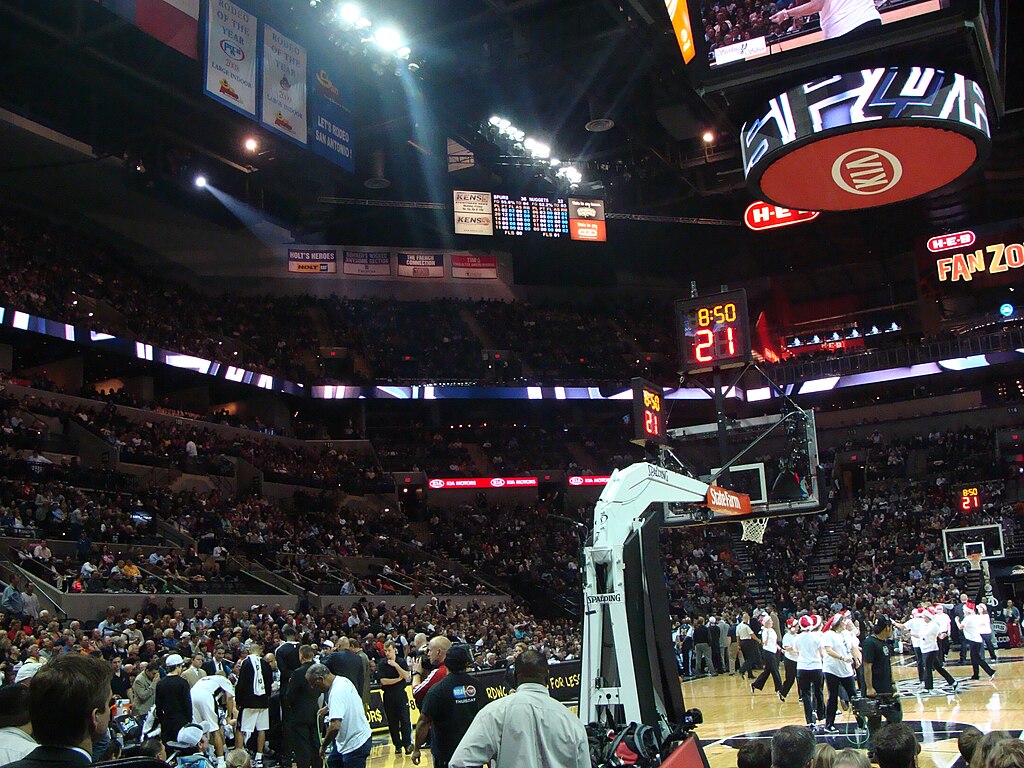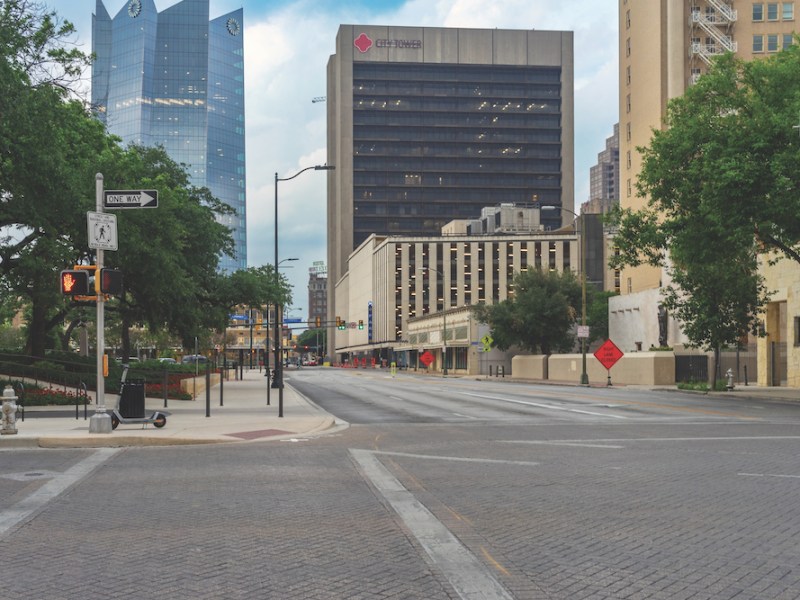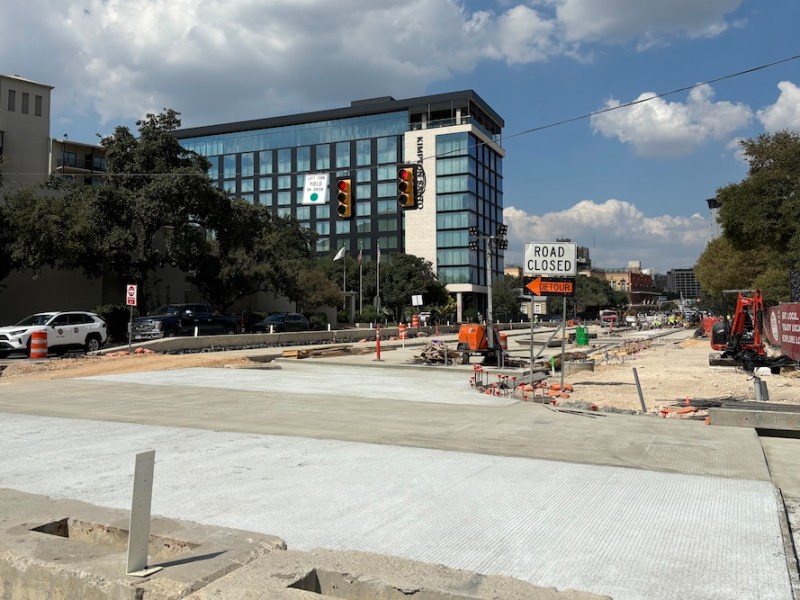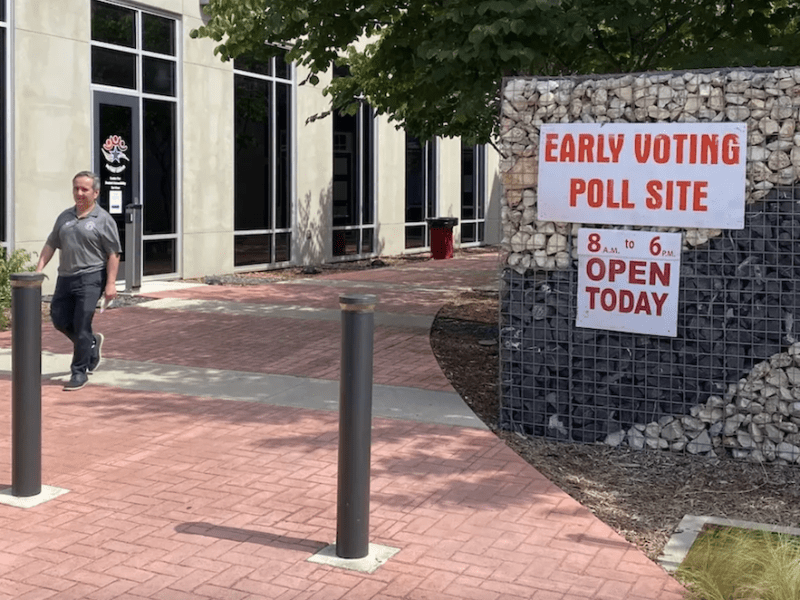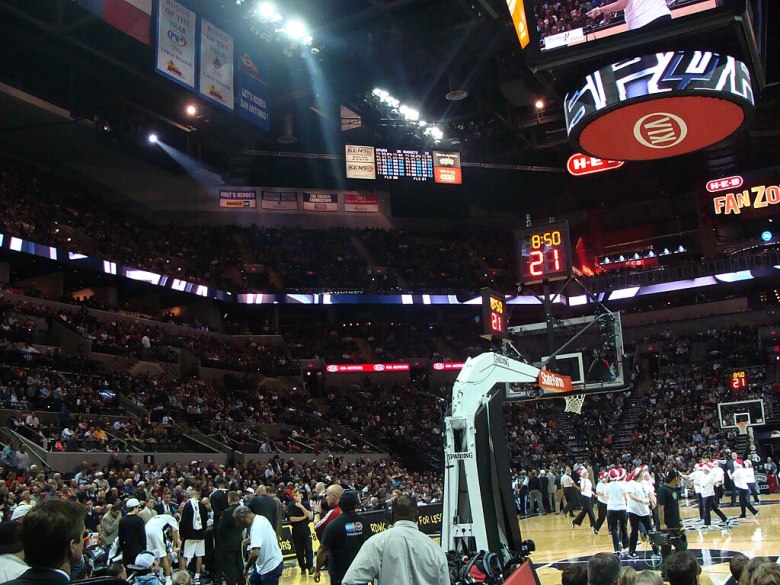 The Spurs’ current facility, the Frost Bank Center, is the 12th-newest in the NBA, according to one ranking. Credit: Wikipedia Commons / Zereshk
The Spurs’ current facility, the Frost Bank Center, is the 12th-newest in the NBA, according to one ranking. Credit: Wikipedia Commons / Zereshk
It’s “insane” that Bexar County voters are being asked to approve public funding for a complex and risky deal to finance a new Spurs arena, a top sports economist who regularly analyzes stadium projects told the Current.
Kennesaw State University economics professor J.C. Bradbury said the fallout from similar deals around the country suggests local taxpayers may end up footing much of the bill for the proposed $1.3 billion arena — likely with money from the city’s general fund.
“San Antonio already built the Spurs a brand new arena. It’s not even 30 years old, and it was refurbished a decade ago,” Bradbury said of the Frost Bank Center, the NBA team’s current home. “This is insane. The owner should be embarrassed for asking. It’s indefensible public policy.”
The Spurs and city officials have argued that a new arena is public good that would revitalize downtown, retain workforce talent and create jobs. Some city leaders have also cautioned that without a new arena, the team could leave for another market.
However, to Bradbury’s point, the Frost Bank Center, which opened in 2002, is the 12th-newest arena in the league.
Bradbury, the author of books including The Baseball Economist: The Real Game Exposed, accused the Spurs’ ownership group of looking for a revenue boost that tends to follow the opening of new arena — and hoping the public can help it foot the bill as it tries to improve its bottom line.
New sports facilities with high-tech amenities tend to see upswings in attendance due to fan excitement, but it often wears off over time, the economist said. The other revenue boost comes from adding additional luxury boxes and premium seating.
“It’s called the novelty effect, and the novelty effect results in elevated revenues for teams for about 10 years after a new venue opens,” Bradbury added.
Although Bradbury speculates the Spurs are looking a financial shot in the arm, it’s worth noting that the Silver and Black are among the league’s most profitable small-market teams. The franchise raked in an estimated $363 million during the 2023-24 season, according to global data and business intelligence platform Statista.
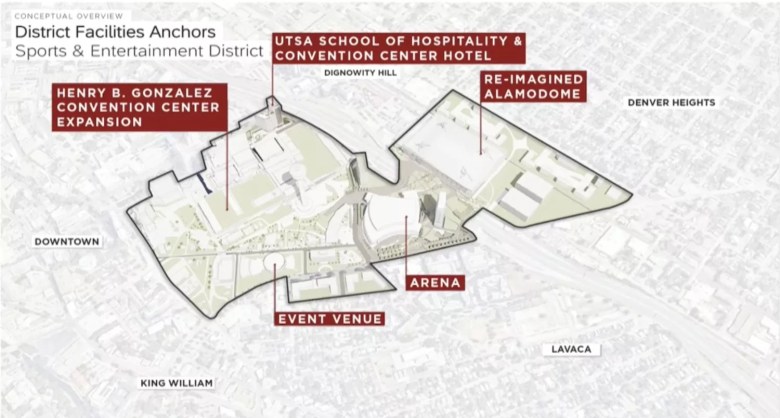 An updated rendering of what Project Marvel might look like if it ever gets completed. Credit: City of San Antonio
An updated rendering of what Project Marvel might look like if it ever gets completed. Credit: City of San Antonio
Bradbury said there’s no problem with Spurs looking to expand revenue. However, he takes issue with the team asking Bexar County taxpayers to front the majority of the risk associated with the complex public financing proposal now before voters.
Under the city’s current plan, the new Spurs arena would be funded using three mechanisms: a Project Finance Zone (PFZ), a Tax Increment Reinvestment Zone (TIRZ) and the county’s visitor tax.
The PFZ involves sales tax revenue generated at Hemisfair that the state is allowing San Antonio to keep, as long as it’s used before 2030 to finance a new arena, convention center upgrades or Alamodome renovations.
The TIRZ will use property tax revenue collected within three miles of Hemisfair to fund the arena.
Meanwhile, Bexar County voters will decide during the Nov. 4 election whether to raise the county visitors tax to 2% to cover the rest of the public financing.
And the Spurs have promised to throw in an additional $500 million.
Once upon a time, municipalities arranged public financing for sports facilities through a single sales tax increase — such as a gas tax — or via property tax revenue, Bradbury said. However, as public support for those methods eroded, team owners and city managers have been forced to get increasingly creative with public financing.
Many of those new deals come with elevated risk, Bradbury said.
In a funding proposal such as the one assembled in San Antonio, the projected revenue from various streams often fails to meet expectations, leaving taxpayers on the hook, the professor added.
“This happens quite a bit,” Bradbury said. “At the end of the day, if there’s a full-faith and credit requirement, which will likely be the case in this deal, then the taxpayers are on the hook. So, if there’s not enough money in tourism, well then, some money can come out of your property taxes. And then they’ll say, ‘Oh, well, nobody could have foreseen this.’ Even though this happens every single time.”
Indeed, international tourism is down already 8.2% this year nationwide. Meanwhile, San Antonio business owners recently told the Current that service and hospitality revenues are down as much as 15% in recent months.
Bradbury points to a stadium deal gone awry in Worcester, Massachusetts, as a stark warning to taxpayers. That Boston suburb used a similar tax-revenue mechanism to pay for a minor-league baseball stadium. However, when expected revenue didn’t materialize, the City of Worcester was forced to dip into public funds to make the debt payments.
“Chambers of commerce — I don’t know what it is about these groups — but they’re always the ones behind this stuff,” Bradbury said. “I think a lot of it has to do with them being the ones who are going to have their club seats subsidized — the ones with season tickets. And they’d like for you to help. I read these op-eds in the Express-News, and I’m like, ‘These are the greatest hits of every empty talking point.”
Early voting on Proposition B, which would allocate the visitor tax to the proposed Spurs arena, runs now through Oct. 31. The polls also will reopen 7 a.m.-7 p.m. on Nov. 4.
Voters can find more information on the election, including polling locations, by visiting the Bexar County Election Department’s website.
Subscribe to SA Current newsletters.
Follow us: Apple News | Google News | NewsBreak | Reddit | Instagram | Facebook | Twitter | Or sign up for our RSS Feed
Related Stories
Over the years, locals have been subjected to glowing promises about plenty of other big projects that fell flat.
Southtown, La Villita and Hemisfair business owners said they no longer trust the city to complete construction on time.
Voters will decide whether to use public funding on a new Spurs arena and determine the fate of 17 statewide propositions.

